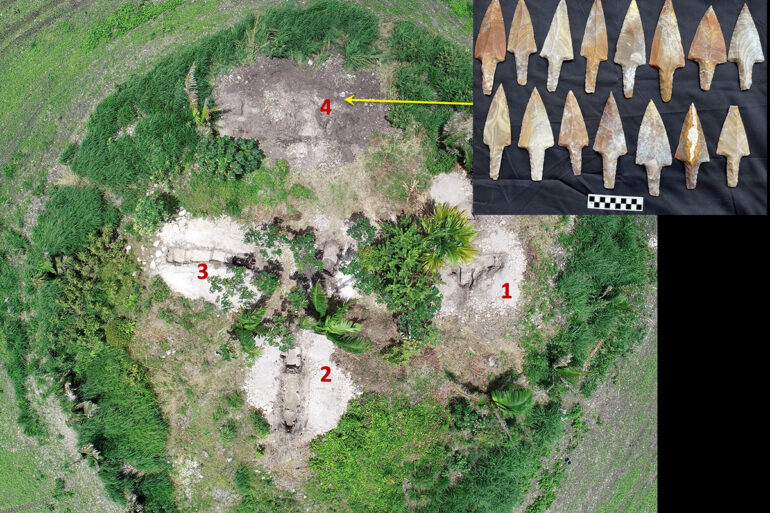We stand in the open fields of Spanish Lookout, a modernized Mennonite farming community in Central Belize, looking at what remains of ancestral Maya homes. White mounds, the remnants of these houses, pock the landscape as far as the eye can see, a stark reminder of what existed more than 1,000 years ago. The collapsed buildings look like smudges on an aerial photograph, but as archaeologists, we get to see them up close. With enough excavation and interpretation, we can eventually make sense of how these dwellings functioned in the deep human past.
Archaeologists usually try to take a representative sample of a site like this, but we are limited on how and where we can excavate. We have been forced to select households and other structures near existing roads—and close to one another. This, then, presents a unique opportunity: the ability to study an ancestral Maya neighborhood.
Our neighborhood paints an interesting portrait of life in the Early Classic period, which dates from A.D. 250-600. By looking at the styles, forms and decoration of broken pieces of pottery, called sherds, we can determine how old these structures are. Standard residences have walls, plaster floors and a collection of domestic vessels that were used for cooking, serving and storage. We also find agricultural tools made of chert, a type of crystalline rock that resembles flint, and manos and metates, which were used to grind maize into flour.
Families lived and worked here, interacted with their neighbors and with the surrounding landscape of fields and forests. We know the Maya left forests in place because the animal bones we find here are of species that can only breed in the forest.
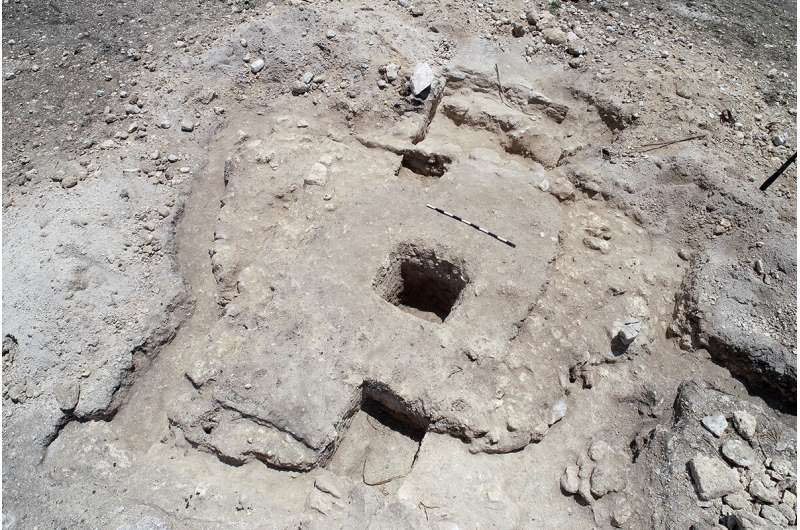
Aerial photograph of what researchers believe is a community structure, like a church or recreation center. © 2022 VOPA and Belize Institute of Archaeology, NICH.
One of the buildings here is a particular puzzle. The ancestral Maya constructed it using uniform stones and white limestone plaster, something quite different from your average Maya farmstead. We found few artifacts and pristine construction fills, the latter usually stock full of artifacts in a typical Maya household. We think we found some type of community building, perhaps for community events or ceremonies, similar to a modern church or recreation center where everyone was welcome.
We also partially exposed a substantial platform mound that had four structures at its summit. The structures surrounded a plaza or courtyard. It is clear that an elite family lived here. This mound would have been secluded, sectioned off from the rest of the neighborhood, like the large house at the end of a cul-de-sac where, if you were lucky, you got invited for a pool party, much different from the community building.
Both the elite and nonelite families that lived in this neighborhood together may have invested in the construction of the community building amid the surrounding residences. The artifacts recovered from the community center were of better quality than those found in dwellings. We even found a cache of 15 stemmed points made of chert. These items required great skill to make as they were carved from the highest quality nonlocal chert. And the Maya made them only to offer them unused as a dedicatory cache to enliven or endow the residence with a soul.
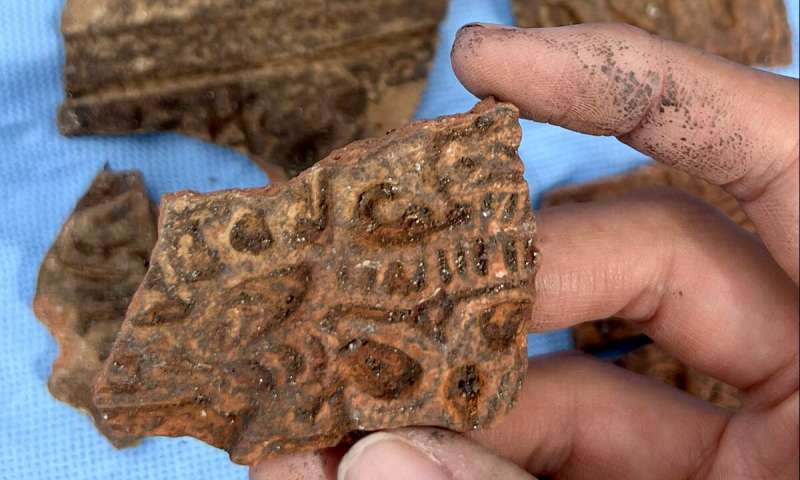
Incised ceramic sherds excavated from an ancestral Maya building. © 2022 VOPA and Belize Institute of Archaeology, NICH.
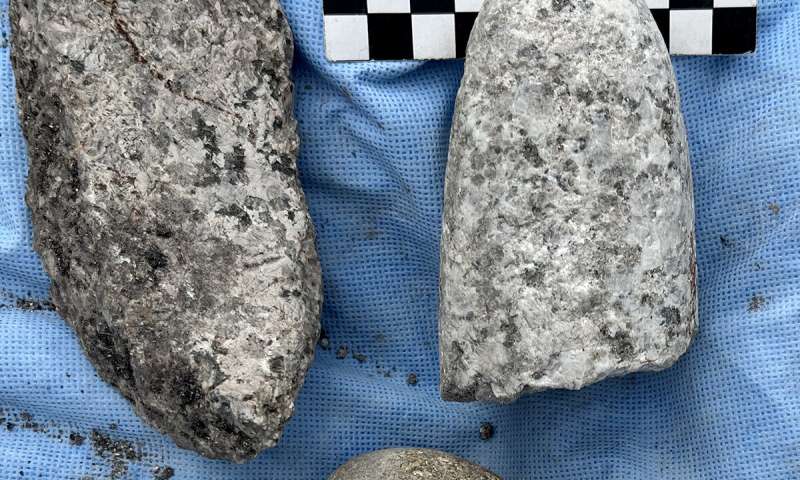
Grinding tools typical of ancestral Maya farmsteads include, from left, a metate fragment, a round stone and a mano fragment. Metates and manos were used to grind maize. © 2022 VOPA and Belize Institute of Archaeology, NICH.
As we look around us, we are struck by the simple fact that people lived here.
When we think about the structures and artifacts associated with neighborhoods and community centers, we too often reduce the ancestral Maya to the materials they left behind. We sometimes focus too much on the context name, the mound number, the artifact count. As we stand at the crossroads of an ancient Maya neighborhood, if we close our eyes and let the present fade away, we can imagine the mundane realities of life in this exact spot nearly 2,000 years ago: the rustle of the leaves of the jungle above us, the scrape and clink of grinding maize, the smell of cooking maize and beans, or the chatter of a neighbor borrowing a tool or asking about the weather.
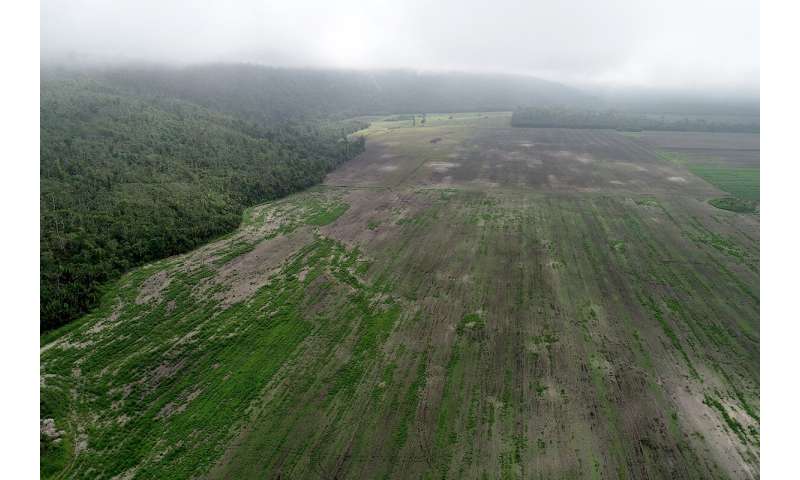
Aerial photo facing east – all the white smudges are ancestral Maya mounds. © 2022 VOPA and Belize Institute of Archaeology, NICH.
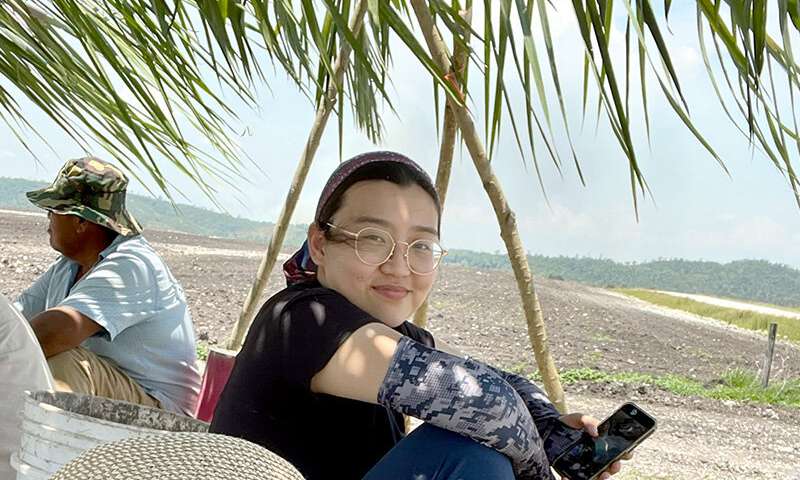
The authors on site in Belize. © 2022 VOPA and Belize Institute of Archaeology, NICH.
We are discouraged by the damage wrought by modern agriculture to the archaeological record and Maya cultural heritage. But how do you explain to a farmer that what they are plowing away is not a nuisance stone or useless piece of pottery but rather the fragments of hundreds of lives. The ghosts of those who lived on the land before walk between us, using what remains of their homes to whisper, “Remember me.”
Provided by
University of Illinois at Urbana-Champaign
Citation:
Exploring an ancestral Maya neighborhood (2022, September 9)
